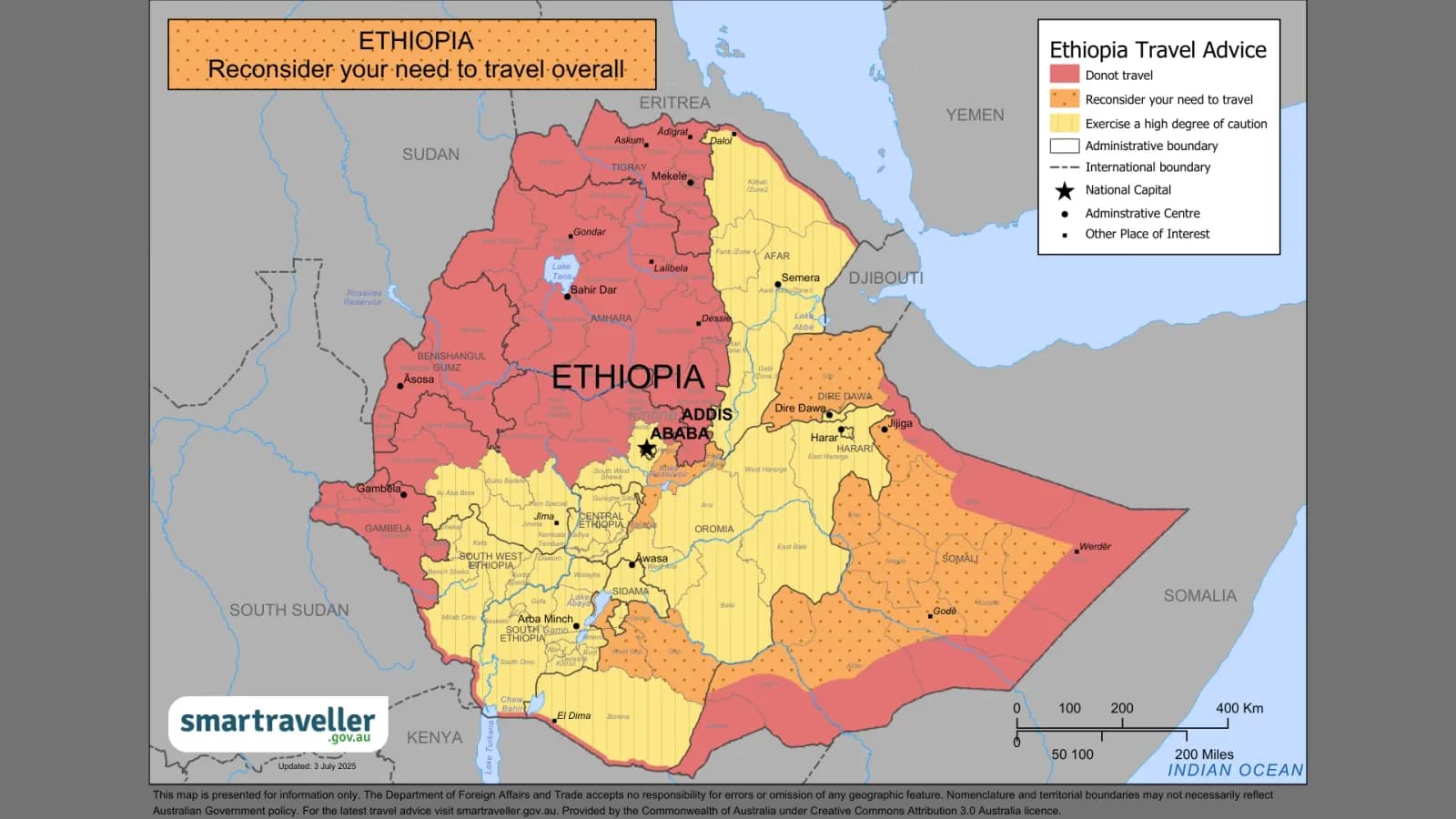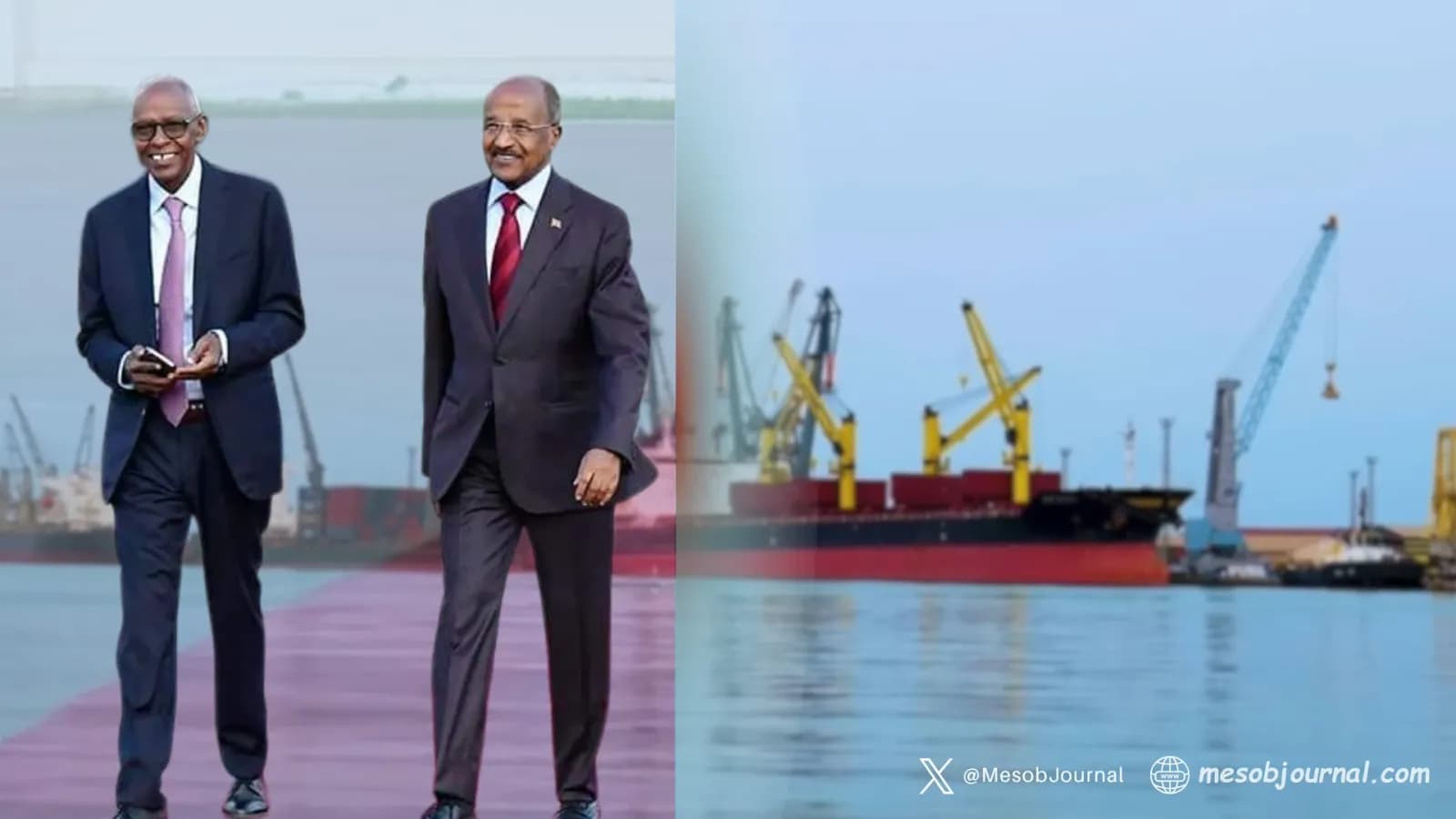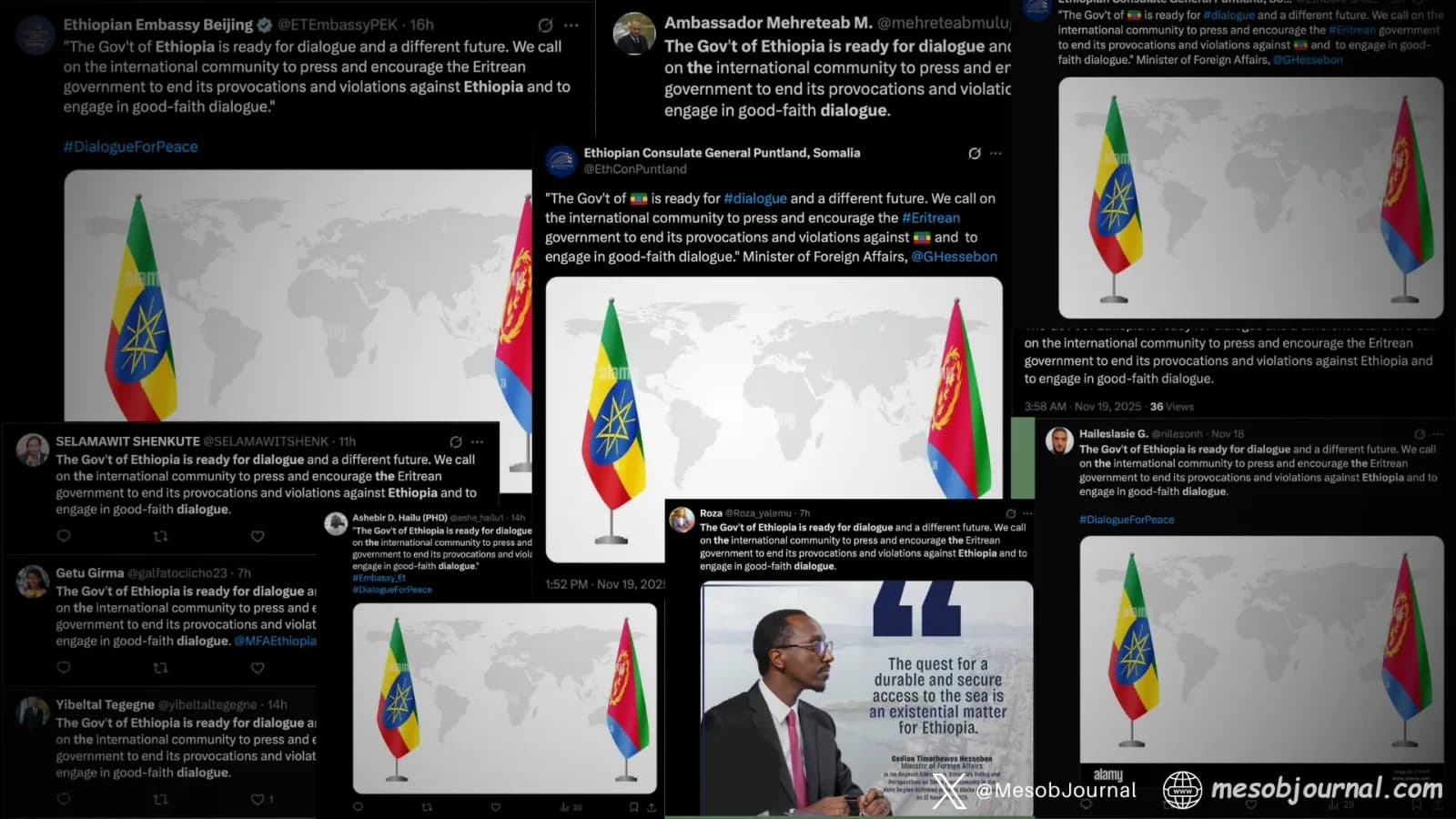Australia’s Ethiopia Warning: Abiy’s Wars Threaten the Region

The map says it all.
From the blood-red zones of Amhara and Benishangul-Gumuz to the orange cautions stretching across Oromia and Somali regions, Australia’s Smartraveller advisory paints Ethiopia not as a tourist destination — but as a country consumed by conflict, fear, and state decay.
The message from Canberra is blunt: “Reconsider your need to travel overall due to the risk of civil unrest and the threat of armed conflict.” Entire regions are labeled “Do Not Travel” — Amhara, Tigray, Gambela, Benishangul-Gumuz, and northern Oromia. Even the nation’s capital, Addis Ababa, home to the African Union’s gleaming headquarters, now requires what the advisory calls a “high degree of caution.”
It’s a diplomatic way of saying what many have whispered for years: Ethiopia is at war with itself.
Abiy Ahmed’s “Prosperity” in Ruins
When Prime Minister Abiy Ahmed came to power in 2018, the world showered him with praise — a young reformer, a peace laureate, the face of a “new Ethiopia.” Seven years later, that image has collapsed under the weight of repression and war.
The Amhara region, once the empire’s core, has turned into a battlefield. Abiy’s government calls it a “law enforcement operation.” Locals call it what it is — a war on his own people. Towns are bombed, civilians displaced, entire districts cut off by federal troops and militias. The same state that claimed to end ethnic division has institutionalized it, weaponized it, and exported it through endless propaganda.
The Smartraveller warning doesn’t use political language, but its tone speaks volumes. It lists terrorism, kidnapping, and armed conflict not as possibilities but as ongoing realities. It warns that roads may close at any time, communication may be unreliable, and the security situation could deteriorate without warning. That’s not travel advice — that’s a clinical description of a failed state.
The Myth of Reform
Abiy’s slogans — “prosperity,” “unity,” “green legacy” — sound hollow against the backdrop of mass arrests, economic default, and ethnic cleansing allegations. His government now faces rebellions on nearly every front: Oromo insurgents in the south, Fano fighters in the north, and a restless population everywhere in between.
Even Addis Ababa, the city that once symbolized pan-African diplomacy, is under quiet siege. The Smartraveller report lists petty crime, violent assaults, and bomb threats as normal risks. It warns foreigners to avoid walking at night and to be alert even in major hotels and markets.
This is the capital of the African Union, yet foreign embassies issue evacuation plans while government propaganda insists “Ethiopia is stable.” The irony is darkly comic: the AU’s peace and security council meets in a city where peace and security no longer exist.
The Cost of Denial
Abiy Ahmed’s administration continues to blame “extremists,” “foreign actors,” and “anti-peace forces” for Ethiopia’s disintegration — everyone but itself. But the Smartraveller report reveals the truth: instability is not imported; it’s homegrown.
From Amhara to Oromia, the state’s over-militarization has replaced governance with siege tactics. Federal troops enforce “security” that breeds more insurgency. Villages become frontlines. Borders become warzones.
Australia’s classification — Level 3: Reconsider your need to travel — is the same warning it issues for countries like Iraq or Myanmar. Level 4 — Do Not Travel — covers nearly half of Ethiopia. This is not perception; this is data.
The question is no longer whether Ethiopia is sliding toward collapse, but how far it will fall before the world admits it.
Regional Implications
The danger does not stop at Ethiopia’s borders. Abiy Ahmed’s government has become a regional destabiliser — stirring conflict in Somalia through unilateral port deals and border incursions, and reviving reckless rhetoric about “access to the sea” that threatens the sovereignty of Eritrea and the Red Sea’s fragile balance.
For regional stability, the lesson is stark: wars of ego and expansionism are luxuries no one can afford. The Smartraveller map is not just a travel advisory — it’s a warning flare for the region.
Until Ethiopia ends its war on its own citizens and reclaims governance from propaganda, no amount of diplomatic gloss will change what the world now officially recognizes: a nation imploding from within.
Related stories

The Red Sea Gambit: Eritrea’s Rise and the Battle for the Horn’s Future
The Resurgence of an Imperial Ghost The political landscape of the Horn of Africa was jolted in late 2023 by the resurgence of a decades-old ambition emanating from Addis Ababa. Prime Minister Abiy Ahmed’s government began a concerted campaign, articulating what it framed as Ethi

The Silent Extraction: How Western Refugee Politics Turned African States Into Gatekeepers — and Eritrea Paid the Price
For nearly two decades, the world was fed a simple story: Eritreans were fleeing “en masse,” and neighbouring African states generously opened their doors. In Europe’s capitals, this narrative fit neatly into pre-existing political agendas. But behind the headlines and donor broc

Eritrea MFA Issues Sweeping Rebuttal to Ethiopia’s “Recycled Ambitions” on the Red Sea
Eritrea’s Ministry of Foreign Affairs on Nov. 23, 2025 has issued one of its most comprehensive and forceful rebukes to date of Ethiopia’s ongoing campaign for “sovereign access” to the Red Sea, accusing Addis Ababa of reviving old expansionist doctrines under new language and at

Copy-Paste Diplomacy: Ethiopia’s ‘Dialogue’ Campaign on Eritrea
Within a few hours this week, a nearly identical paragraph began marching across Ethiopian state-linked accounts on X and Facebook. From the Ethiopian Embassy in Tokyo to embassy pages in Beijing and other missions, from MFA-adjacent pages to partisan activists, the same text app

